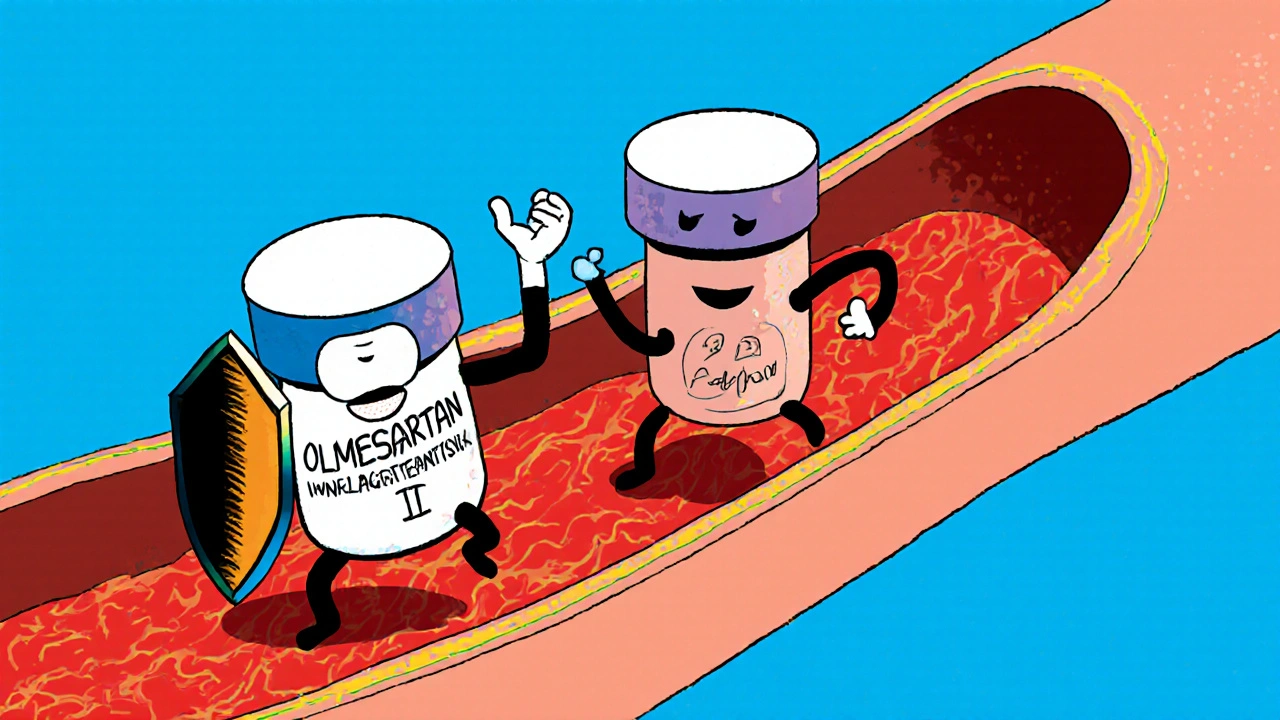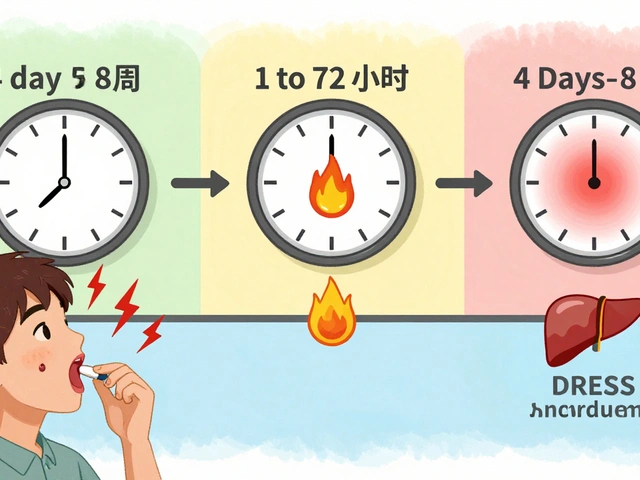Olmesartan: A Complete Look at the ARB for Blood Pressure Control
When dealing with Olmesartan, an angiotensin II receptor blocker (ARB) that relaxes blood vessels to lower blood pressure. Also known as Benicar. It’s a common choice for treating hypertension and reducing cardiovascular risk.
Olmesartan belongs to the Angiotensin II receptor blockers, a drug family that blocks the effects of angiotensin II, preventing vessels from tightening. Other members include Losartan, Valsartan, and Candesartan. This class works alongside ACE inhibitors but usually causes fewer cough complaints.
How Olmesartan Works and Who Benefits
Olmesartan blocks the AT1 receptor, which stops angiotensin II from narrowing arteries. The result is smoother blood flow, lower systolic and diastolic numbers, and less strain on the heart. Patients with stage 1 or stage 2 high blood pressure often see a 10–20 mm Hg drop after a few weeks. It’s also approved for protecting kidneys in diabetic patients, a benefit shared by most ARBs.
People with chronic kidney disease, heart failure, or a history of stroke find Olmesartan useful because it cuts down on the remodeling of blood vessels. The drug’s once‑daily dosing fits busy lifestyles, and the tablet can be taken with or without food, which simplifies adherence.
When comparing to other ARBs, Olmesartan has a longer half‑life (≈13 hours) than Losartan (≈2 hours) and offers more stable blood‑pressure control over 24 hours. That steadier curve can mean fewer dose adjustments for patients who bounce between target ranges.
Side‑effect wise, the most common issues are dizziness, headache, and mild fatigue—typical of blood‑pressure meds. Serious concerns like angio‑edema are rare but still listed. Because Olmesartan raises potassium levels, doctors often check serum potassium and renal function before starting therapy, especially if the patient also uses potassium‑sparing diuretics or supplements.
Drug interactions matter. Combining Olmesartan with non‑steroidal anti‑inflammatory drugs (NSAIDs) may blunt its blood‑pressure‑lowering effect and stress the kidneys. Similarly, using it alongside other renin‑angiotensin system blockers (like ACE inhibitors) can increase the risk of hyperkalemia, so clinicians usually avoid dual therapy unless there’s a compelling reason.
Dosage starts at 20 mg once daily for most adults; the range goes up to 40 mg if needed. For patients with severe hypertension, physicians may add a thiazide diuretic such as hydrochlorothiazide, creating a combo pill that simplifies the regimen. Children under 6 years are not approved for Olmesartan, reflecting limited safety data.
Cost‑effectiveness is another angle. Generic Olmesartan is priced competitively against branded Losartan, especially in markets where the patent has expired. Insurance plans often list it as a preferred option, making it accessible for long‑term therapy.
Overall, Olmesartan sits at the intersection of efficacy, tolerability, and convenience. Whether you’re looking for a single‑drug solution for high blood pressure, a kidney‑protective agent for diabetes, or a stable partner in combination therapy, it checks the major boxes. Below you’ll find detailed comparisons with other ARBs, dosage guides, side‑effect management tips, and buying advice that can help you make an informed decision.

Olmesartan/Amlodipine Long-Term Efficacy for Hypertension
A detailed look at how the Olmesartan/Amlodipine combo maintains blood pressure control over years, its safety profile, and practical prescribing tips for hypertension.
View More




